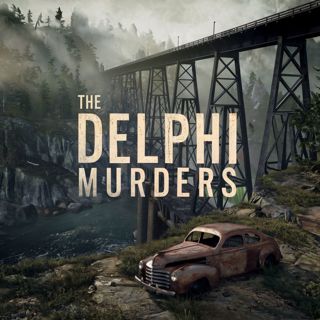
What’s Left of Brian Walshe’s Defense After His Bombshell Plea-WEEK IN REVIEW
Brian Walshe’s courtroom strategy just blew apart. When he stood in front of a judge and admitted — in his own voice — that he willfully conveyed Ana Walshe’s remains and misled investigators, he didn’t just plead guilty to two charges. He detonated the core of the defense narrative he’s been hiding behind for nearly two years. Now he’s walking into a murder trial without the one thing most defendants in no-body cases cling to: deniability. In this episode of Hidden Killers, we break down exactly how this guilty plea changes the entire trajectory of the trial and what it leaves his defense team scrambling to do next. Because once you admit that you touched the remains, once you admit you interfered with the investigation, once you admit you contributed to evidence being destroyed, you’re no longer arguing about whether you were involved. You’re arguing about how deep that involvement goes. So what does Brian Walshe have left? What does a defense look like when you’ve already admitted to actions that most jurors see as the behavior of someone with something enormous to hide? We examine the only narrative his team has left: the idea that Ana’s death was not murder, that something happened suddenly or unexpectedly, and that Brian spiraled into panic and made disastrous choices afterward. It’s a narrow road — one that has to compete with a mountain of digital searches, forensic findings, surveillance footage, and behavior prosecutors say lay out a chilling timeline. This episode digs into the strategies the defense is likely to deploy, how they’ll try to reinterpret the incriminating searches, how they’ll frame his mental state, and why they may try to turn the guilty plea itself into proof of honesty rather than guilt. With the trial about to begin, and with 70 potential jurors being questioned, this case is entering a new phase — one where the stakes for Brian Walshe couldn’t be higher, and his room to maneuver couldn’t be smaller. Subscribe for daily trial coverage, expert analysis, and every major update as it happens. #BrianWalshe #AnaWalshe #HiddenKillers #TrueCrimeToday #TrueCrimeUpdates #CourtCase #TrialCoverage #JusticeSystem #LegalAnalysis #TrueCrimeCommunity Want to comment and watch this podcast as a video? Check out our YouTube Channel. https://www.youtube.com/@hiddenkillerspod Instagram https://www.instagram.com/hiddenkillerspod/ Facebook https://www.facebook.com/hiddenkillerspod/ Tik-Tok https://www.tiktok.com/@hiddenkillerspod X Twitter https://x.com/tonybpod Listen Ad-Free On Apple Podcasts Here: https://podcasts.apple.com/us/podcast/true-crime-today-premium-plus-ad-free-advance-episode/id1705422872
24 Marras 13min

Holeman’s Testimony EXPOSES How Badly Delphi Was Investigated-WEEK IN REVIEW
In today’s episode, we take a hard, relentless look at Lieutenant Jerry Holeman’s testimony in the Delphi murders case — and what it reveals about the investigation that led to the conviction of Richard Allen. This isn’t speculation. This isn’t rumor. This is straight from the sworn record: the contradictions, the assumptions, the missing analysis, and the investigative gaps that no one watching the press conferences ever got to see. Holeman was positioned as one of the state’s anchors — a senior Indiana State Police investigator expected to bring clarity and confidence to a deeply complex double-homicide case. Instead, his testimony exposes just how shaky the investigative foundation really was. Sticks placed on the bodies of Abby and Libby were dismissed as “camouflage,” even though they concealed nothing. Then, suddenly, the state floated a psychological term — “undoing” — that had never appeared in the investigative record, and Holman endorsed it without hesitation. His certainty about a “single offender” wasn’t based on forensic proof. It came from a belief he stated on the stand: that in multi-offender crimes, “someone usually talks.” Yet the case file contains exactly that — a suspect making disturbing comments investigators inexplicably labeled “no further action.” We dive into everything Holman didn’t explain: why symbolic elements were barely analyzed, why alternative suspects weren’t vetted, why forensic opportunities were missed, why the bullet lacked field documentation, why major investigative questions were replaced with assumptions, and why his testimony often stood in open conflict with other investigators on essential questions like the FBI’s role. This isn’t about guilt or innocence. It’s about whether the investigation that shaped the entire Delphi narrative was thorough, consistent, or grounded in evidence. And Holman’s testimony makes it undeniably clear: the holes aren’t small. They’re foundational. If you care about the truth in Delphi, this breakdown matters. #Delphi #DelphiCase #TrueCrime #RichardAllen #InvestigativeAnalysis #HolemanTestimony #CourtRecord #JusticeSystem #HiddenKillers #TrueCrimeCommunity Want to comment and watch this podcast as a video? Check out our YouTube Channel. https://www.youtube.com/@hiddenkillerspod Instagram https://www.instagram.com/hiddenkillerspod/ Facebook https://www.facebook.com/hiddenkillerspod/ Tik-Tok https://www.tiktok.com/@hiddenkillerspod X Twitter https://x.com/tonybpod Listen Ad-Free On Apple Podcasts Here: https://podcasts.apple.com/us/podcast/true-crime-today-premium-plus-ad-free-advance-episode/id1705422872
23 Marras 19min

Teen, Anna Kepner Found Dead on Carnival Cruise — New Details Raise Serious Questions-WEEK IN REVIEW
An 18-year-old girl goes on a family cruise and never comes home. That alone is heartbreaking. But when the details start to surface — when the reporting suggests she wasn’t simply found in her bed, but under it… wrapped… covered… hidden — the silence from authorities becomes its own kind of story. In today’s episode, we take a deep, fact-driven look at the death of Anna Kepner, the bright Florida high-school senior whose life ended aboard the Carnival Horizon in circumstances that are anything but ordinary. This isn’t speculation. This is the complete picture of what’s publicly known right now — the timeline, the evidence investigators already have, the procedures that should be happening immediately, and why these first days matter more than anyone wants to admit. Anna wasn’t the typical cruise fatality. She wasn’t elderly. She wasn’t ill. She wasn’t alone. She was a teenager with her family, with plans, with a future. And when cases like this happen at sea, history tells us something important: if you don’t get answers early, you may never get them at all. We break down why maritime investigations are so vulnerable, why evidence evaporates fast, and how cases like George Smith, Amy Lynn Bradley, and Rebecca Coriam show what happens when the early hours are lost. We look at what investigators already know — from keycard logs to hallway cameras to autopsy findings — and why that information matters right now, while the facts are still fresh. This is not about sensationalism. It’s about urgency. It’s about accountability. It’s about making sure Anna’s story doesn’t get added to the long list of “unsolved at sea” headlines we revisit ten years from now. It’s about insisting that the truth is worth fighting for — now, while it’s still within reach. #HiddenKillers #CarnivalCruise #AnnaKepner #CruiseDeath #TrueCrime #TonyBrueski #Investigation #FBI #CrimeAtSea #MaritimeLaw Want to comment and watch this podcast as a video? Check out our YouTube Channel. https://www.youtube.com/@hiddenkillerspod Instagram https://www.instagram.com/hiddenkillerspod/ Facebook https://www.facebook.com/hiddenkillerspod/ Tik-Tok https://www.tiktok.com/@hiddenkillerspod X Twitter https://x.com/tonybpod Listen Ad-Free On Apple Podcasts Here: https://podcasts.apple.com/us/podcast/true-crime-today-premium-plus-ad-free-advance-episode/id1705422872
23 Marras 13min

New Kohberger Lawsuit Blows Open New Questions - Did WSU IGNORE RED FLAGS?-WEEK IN REVIEW
Tonight on Hidden Killers, we’re diving into the lawsuit that could finally crack open the one part of the Bryan Kohberger story that’s been sealed tight: what Washington State University actually knew about his behavior before the Idaho killings — and what they did or didn’t do with it. The Goncalves family has officially taken the first major step toward suing WSU, and the claims are explosive. They’re arguing that the university wasn’t just a backdrop in Kohberger’s life — it was an institution with warnings stacking up in its hallways, complaints piling on desks, and a growing chorus of women saying the same thing: this man made them feel unsafe. We now know multiple WSU faculty and graduate students reported Kohberger for intimidating conduct, blocking doorways, staring silently at women, hovering over desks, following people to their cars, and violating boundaries over and over. Some were so scared they asked for escorts at the end of the day. Others filed formal discrimination and harassment complaints. One professor even told colleagues she feared he’d go on to harm students someday. And still — he remained in the program. Still teaching. Still representing the university. Still in university housing. Still collecting a paycheck. The lawsuit argues that WSU had enough information to intervene long before Kohberger ever crossed into Idaho. Not because anyone predicted the crime — but because institutions have a duty to respond to patterns of harassment, intimidation, and escalating hostility. The families want answers, and they want every internal document: every HR complaint, every faculty meeting, every email where someone said, “Something is wrong with this guy.” This case could reshape how universities handle red-flag students and employees. It could expose just how close institutions sometimes get to danger without ever stepping in. And it could finally tell these families whether the system that surrounded Kohberger ever tried to stop what so many people felt happening right in front of them. Join me as we break down what this lawsuit means, what the families are fighting for, and why the truth matters now more than ever. #HiddenKillers #BryanKohberger #WSU #KohbergerCase #TrueCrime #IdahoCase #KayleeGoncalves #MoscowMurders #JusticeForTheVictims #TrueCrimeCommunity Want to comment and watch this podcast as a video? Check out our YouTube Channel. https://www.youtube.com/@hiddenkillerspod Instagram https://www.instagram.com/hiddenkillerspod/ Facebook https://www.facebook.com/hiddenkillerspod/ Tik-Tok https://www.tiktok.com/@hiddenkillerspod X Twitter https://x.com/tonybpod Listen Ad-Free On Apple Podcasts Here: https://podcasts.apple.com/us/podcast/true-crime-today-premium-plus-ad-free-advance-episode/id1705422872
23 Marras 14min

Two Cases Just Shifted — Brian Walshe’s Plea Flip & WSU Under Kohberger Fallout Fire
Two major true-crime cases just took sharp, unexpected turns — one in the courtroom, one in the civil arena. First, Brian Walshe blindsided the court by pleading guilty to disposing of Ana Walshe’s remains and misleading investigators — but still maintaining he didn’t kill her. It’s a move that redefines the entire murder trial and forces huge strategic shifts for both sides. Then, across the country, Washington State University is facing legal heat. The Goncalves family has filed a civil claim arguing WSU ignored repeated warnings about Brian Kohberger before the Moscow murders. More than a dozen complaints. A professor calling him a future predator. Students saying they felt trapped and unsafe. The question now is simple: Does the law say the university should have done more? On today’s episode of Hidden Killers, Tony Brueski sits down with legal analyst Eric Faddis to break down both cases: • Why did Walshe plead guilty to these charges but not murder? • Does this strengthen the prosecution’s theory — or hand the defense a new angle? • What does the jury hear now, and how will it shape perception? • And in the WSU civil case — what duty does a university owe? • What evidence matters most? • Does foreseeability apply when the crime occurred off-campus at another school? • And is the real goal here discovery — forcing WSU’s internal files out into the light? Two cases. Two seismic shifts. One conversation that lays out the stakes, the law, and the fallout. #HiddenKillers #TrueCrime #BrianWalshe #BryanKohberger #WSU Want to comment and watch this podcast as a video? Check out our YouTube Channel. https://www.youtube.com/@hiddenkillerspod Instagram https://www.instagram.com/hiddenkillerspod/ Facebook https://www.facebook.com/hiddenkillerspod/ Tik-Tok https://www.tiktok.com/@hiddenkillerspod X Twitter https://x.com/tonybpod Listen Ad-Free On Apple Podcasts Here: https://podcasts.apple.com/us/podcast/true-crime-today-premium-plus-ad-free-advance-episode/id1705422872
23 Marras 54min

New Criminal Charges Coming For Diddy After 2020 Assault Allegations Surface?-WEEK IN REVIEW
Sean “Diddy” Combs is already sitting in federal custody, already facing civil lawsuits, already under investigation for trafficking-related conduct — but now the entire landscape has shifted again. The Los Angeles County Sheriff’s Department has officially confirmed that they are investigating a new sexual assault allegation tied to an incident reported to have occurred in 2020. And this one? It’s not decades old. It’s not lost to history. It lives in the digital era, where timelines can be cross-checked, data can be recovered, and investigators can build a picture of the truth in ways that simply weren’t possible twenty years ago. In this episode of Hidden Killers, Tony Brueski breaks down exactly what this new allegation means — not in the sensationalized, rumor-driven way the internet churns out quickly, but in a grounded, fact-based, emotionally clear look at what happens when a complaint like this enters a system already in motion. What does it mean when LASD publicly says they’re investigating? Why does the 2020 date matter so much? And how does this fit into the wider legal environment surrounding Combs, including federal raids, seized electronics, and a growing number of civil claims? This is not about assuming guilt. This is about understanding why this one report carries so much weight, why survivors come forward when power starts to crack, and how accountability works when someone who has spent decades insulated by money, fame, and influence suddenly finds themselves answering to the same system everyone else does. We’re looking at this moment from all angles: the psychology, the legal implications, and the reality of what happens next if investigators find even a shred of corroboration. Because when a case enters a jurisdiction like Los Angeles — a jurisdiction not intimidated by celebrity — the rules change. This story isn’t finished. But today, it took a very significant turn. #HiddenKillers #DiddyInvestigation #SeanCombsCase #TrueCrimeNews #LegalAnalysis #LASD #BreakingCrimeStories #SurvivorVoices #JusticeSystem #TonyBrueski Want to comment and watch this podcast as a video? Check out our YouTube Channel. https://www.youtube.com/@hiddenkillerspod Instagram https://www.instagram.com/hiddenkillerspod/ Facebook https://www.facebook.com/hiddenkillerspod/ Tik-Tok https://www.tiktok.com/@hiddenkillerspod X Twitter https://x.com/tonybpod Listen Ad-Free On Apple Podcasts Here: https://podcasts.apple.com/us/podcast/true-crime-today-premium-plus-ad-free-advance-episode/id1705422872
23 Marras 19min

The Epstein Files Fallout Explored With Psychotherapist Shavaun Scott-WEEK IN REVIEW
When the Epstein files go public, the biggest shock won’t be a single name — it will be the realization of how many institutions failed, looked away, or quietly enabled a predator to operate at the highest levels of society. And once that truth lands, America is going to feel something profound: institutional betrayal. In this riveting one-hour discussion, Tony Brueski and psychotherapist Shavaun Scott dig into the psychology of what happens when the public discovers that the systems they trusted were protecting someone like Jeffrey Epstein. Governments. Universities. Financial institutions. Social circles. Even media figures. When the public sees how interconnected it all was, trust fractures — sometimes permanently. Shavaun explains why institutional betrayal wounds deeper than individual harm, why people struggle to process wrongdoing by powerful figures, and why this release may cause a destabilizing but necessary shift in how Americans view power, authority, and accountability. We explore the psychological whiplash of discovering that “the system worked” was a myth. Why people defend public figures out of identity rather than fact. And why denial becomes a survival mechanism when the truth feels too big to accept. Most importantly, we examine what healing could look like — how truth, even painful truth, can be the beginning of a more honest national conversation about abuse, complicity, and institutional decay. This interview isn’t about politics. It’s about psychology. And it’s about what happens when a country finally sees what was in the dark. #HiddenKillers #EpsteinFiles #InstitutionalBetrayal #ShavaunScott #TonyBrueski #TrueCrimeAnalysis #PowerAndAbuse #Psychology #NationalTrauma #MentalHealth Want to comment and watch this podcast as a video? Check out our YouTube Channel. https://www.youtube.com/@hiddenkillerspod Instagram https://www.instagram.com/hiddenkillerspod/ Facebook https://www.facebook.com/hiddenkillerspod/ Tik-Tok https://www.tiktok.com/@hiddenkillerspod X Twitter https://x.com/tonybpod Listen Ad-Free On Apple Podcasts Here: https://podcasts.apple.com/us/podcast/true-crime-today-premium-plus-ad-free-advance-episode/id1705422872
23 Marras 37min





















